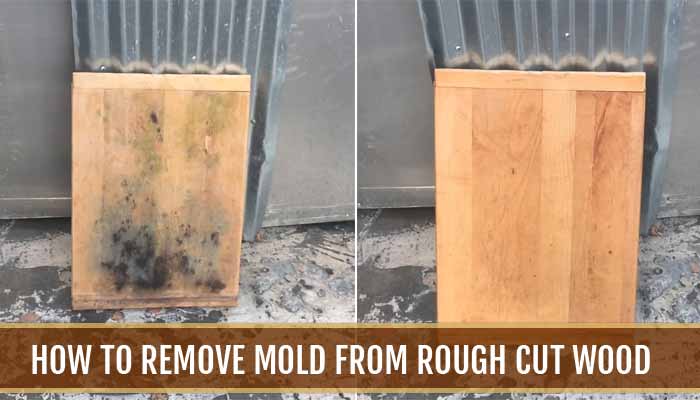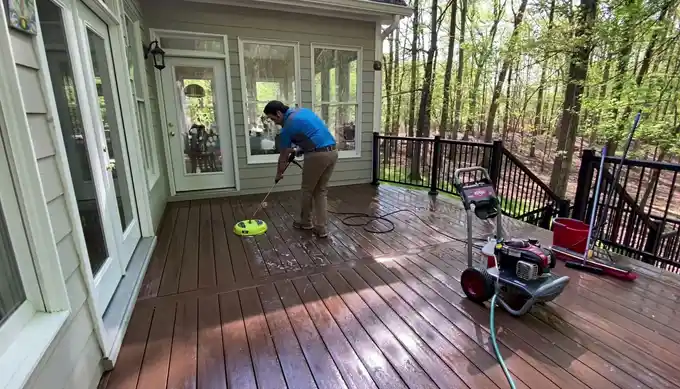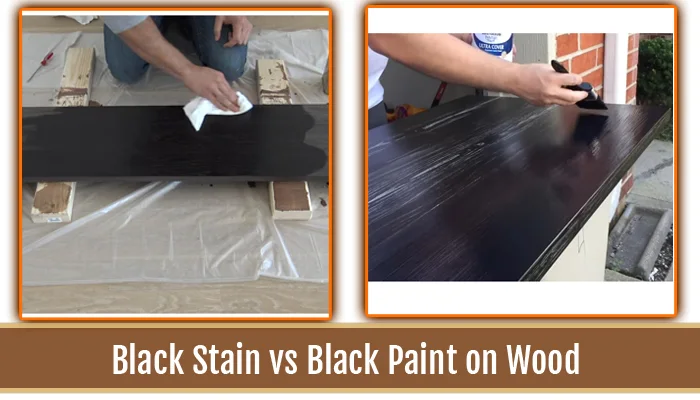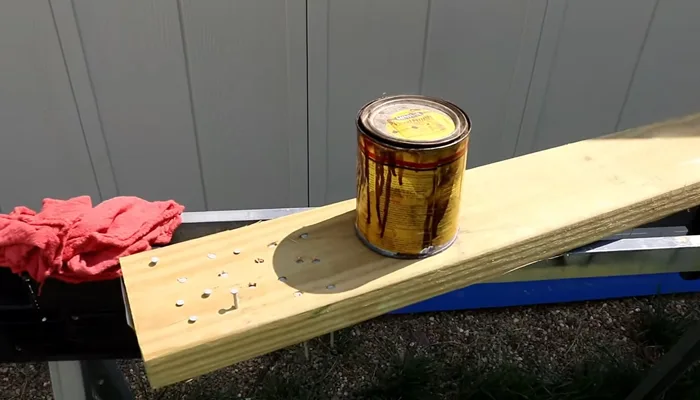WoodenuKnow.com is a participant in the Amazon Services LLC Associates Program, an affiliate advertising program designed to provide a means for sites to earn advertising fees by advertising and linking to Amazon.com and may earn from qualifying purchases.
Mold can grow on rough cut wood in your home. If you have mold growing on your wood, it’s essential to remove it as soon as possible.
This article will show you how to remove mold from rough cut wood so you can enjoy your beautiful new piece of furniture! Read now for more information about removing mold from rough cut wood.
What is Mold?
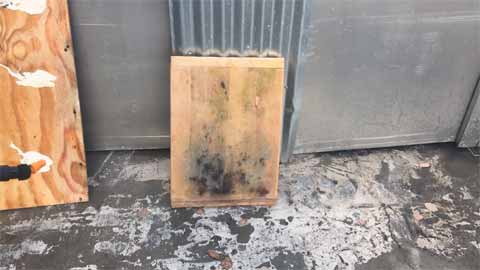
Mold is a type of fungus that grows in damp conditions. There are many different types of mold, and all react differently to the removal process. Some may smudge, some may dissolve on contact, while others may never come off.
Mold grows anywhere there is moisture. Bathrooms, laundry rooms, basements, and kitchens are familiar places that mold likes to grow. But, it can also grow on wood surfaces in your home too.
How Does Mold Grow?
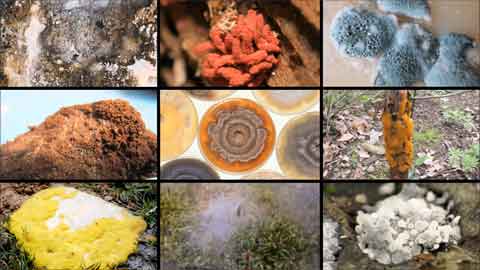
Mold needs a combination of moisture and food to grow. If the environment contains both, mold can start growing within 24 hours. To stop mold growth, you’ll need to fix the moisture problem and dispose of all of the moldy items in your home.
Mold has been found in homes that have damp carpet, leakages, and condensation like that underneath windows. These are the last types of places where water is easily accessible and will be collected for a long time without being discovered.
Other possible causes for mold growth include excessive humidity levels or inadequate ventilation in your home. Correct these problems as soon as possible before the problem gets worse.
There Are Two Main Types of Mold – Black and White
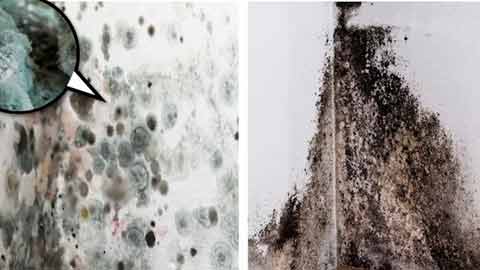
The black and white molds are the most common types. Black mold is the one that is most likely to cause allergic reactions in humans.
This type of mold is less prevalent than white mold, which forms in dark patches or on surfaces with high humidity.
Guide On: How to Remove Mold from Rough Cut Wood
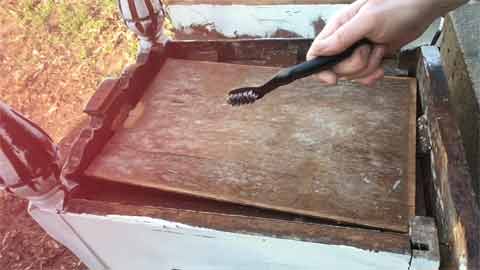
Step 01: Spread a Generous Layer of Mold Killing Product
It’s essential to spread a great layer of mold-killing product on the affected area to reach deep down into the folds of the wood. That way, the product will kill all of the spores that cause mold to grow.
Step 02: Wait for the Product to Dry
You’ll have to wait for your chosen mold-killing product to dry before you can put anything back on top of that surface, or else you’ll need to wash all that off and start again. It usually takes 24 hours for the product to dry and another 24 hours before you can put things back on top of it.
Step 03: Vacuum the Affected Area
Vacuum the affected area and any leftover material off the surface. It’s essential to keep the area clean as you’re waiting for the product to dry.
This means vacuuming any fibers that get flying around and sweeping up any particles of dust or dirt that you find on the surface, so nothing gets trapped and starts growing more mold.
You’ll also want to take all decorations or anything else that might be sitting on top of the surface off until it’s ready to be reused.
A good way to avoid having this problem in the first place is to make sure you’re using a finish that’s specifically designed to resist mold growth, like one that will bond with the wood so it can’t soak in.
Step 04: Mix Bleach and Water Together to Create a Solution
To remove mold from rough cut wood, mix bleach and water to create a solution. You should clean the area where the mold is located. Combining these two ingredients will produce a potent chemical that will kill any bacteria or other contaminants on this surface.
Make sure you apply this mixture generously so it can get deep into the crevices of the wood and eradicate all of those pesky spores.
The mixture is not good for skin contact, so make sure you wear gloves and avoid getting them on your clothing or anything else that you want to keep intact. You’ll want to wait 24 hours before using the area again, or else you’ll have to reapply the mixture and wait another 24 hours before putting anything back up there.
Step 05: Scrub the Surface Using a Brush or Sponge
It’s important to scrub the surface with the mixture using a brush or sponge. Doing this will ensure that any mold is completely removed from deep within the crevices of the wood, and you’ll be able to get it all before it has time to start growing again.
Again you should also make sure you wear gloves and avoid getting this mixture on your clothes or anything else you want to keep intact.
Step 06: Let it Dry for at Least 24 Hours
Let the product dry for at least 24 hours before sealing it. It’s important to let it dry entirely, so any mold spores hiding deep down in the folds of the wood will be eliminated.
Step 07: Seal it to Protect Against Future Growth
After 24 hours of letting it dry, coat the entire surface with a sealant, varnish, or polyurethane to keep mold from growing again. It’s best to use glue or varnish designed explicitly for this purpose if you can find one.
A suitable sealant will bond with the wood and create a barrier that resists water penetration. This way, even if mold does manage to grow on the surface, it won’t spread.
Additional Tips
Listed below are a few additional tips that may be helpful
Regularly Cleaning
Mold needs three conditions to grow: a surface to grow on, water, and warm temperatures. The best way to prevent the growth of either type of mold on rough cut wood is by regularly cleaning up spills or other water sources.
You can remove mold spores in your home by using a “green” cleaner, such as a mixture of bleach and water.
When in Doubt, Seek Medical Attention
If you think your health has been affected because of mold exposure, contact your doctor to report the problem and learn about any potential treatments that may help.
Consult with a Professional
If you have found some form of mold growing in your home and The equipment you need isn’t available to you, consult with a professional who has expertise in remediation for homes.
FAQs on How to Remove Mold from Rough Cut Wood
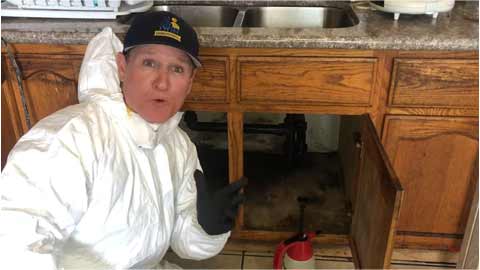
What Type of Wood Can Mold Grow On?
Mold can grow anywhere with plenty of humidity but typically only grows on unfinished or untreated wood products. If you’re looking for a way to identify whether or not your wood furniture contains mold, check the bottom of the product under your sofa or table. If you find any black mold growing there, it’s likely that other areas will also have been infested with mold spores.
If your piece is made of wood and has a rough surface finish, it’s at risk of developing mold in just about every area of your home.
This can include wooden shelves, kitchen counters, furniture pieces with tiny cracks or holes in the wood, and any other rough-cut piece of wood that has been exposed to moisture in your home.
How Do I Know If the Mold is Dangerous?
If you or someone in your household reacts to black mold, then it’s essential to get rid of it as soon as possible. There are plenty of over-the-counter treatments available that can target these types of mold. Still, it is best to consult with a professional before using any treatment for an extended time.
It’s impossible to remove all traces of mold from a surface after the fact, so if you think you may have found some spots. Clean up the issue immediately before it gains momentum.
Is Vinegar Effective in Killing Mold Spores on Rough Cut Wood?
Yes, vinegar is effective at killing mold spores on wood surfaces.
Mold and mildew grow from a pre-existing water source in the form of condensation or moisture brought into homes either through windows or faucets.
Generally speaking, they thrive in areas with warm temperatures and high humidity levels that can range anywhere from 30% to 100%. It’s also important to note that these fungal growths only need four hours without any air circulation to develop fully as they feed off nutrients from the wood itself.
That being said, vinegar is a great way to remove mold because it tends to kill up to 99% of all spores without any harsh chemicals whatsoever.
Last Thoughts
My last thought is to reiterate that mold can grow almost anywhere, and it needs only a few conditions for this to happen. Take care of any spills or dampness on your wood surface, and clean up the affected area as soon as possible.
We hope this blog post has helped you know about How to Remove Mold from Rough Cut Wood.
Thank You for Reading This Blog Post. We will be delighted if you leave a comment or question in the Comment Box below.

